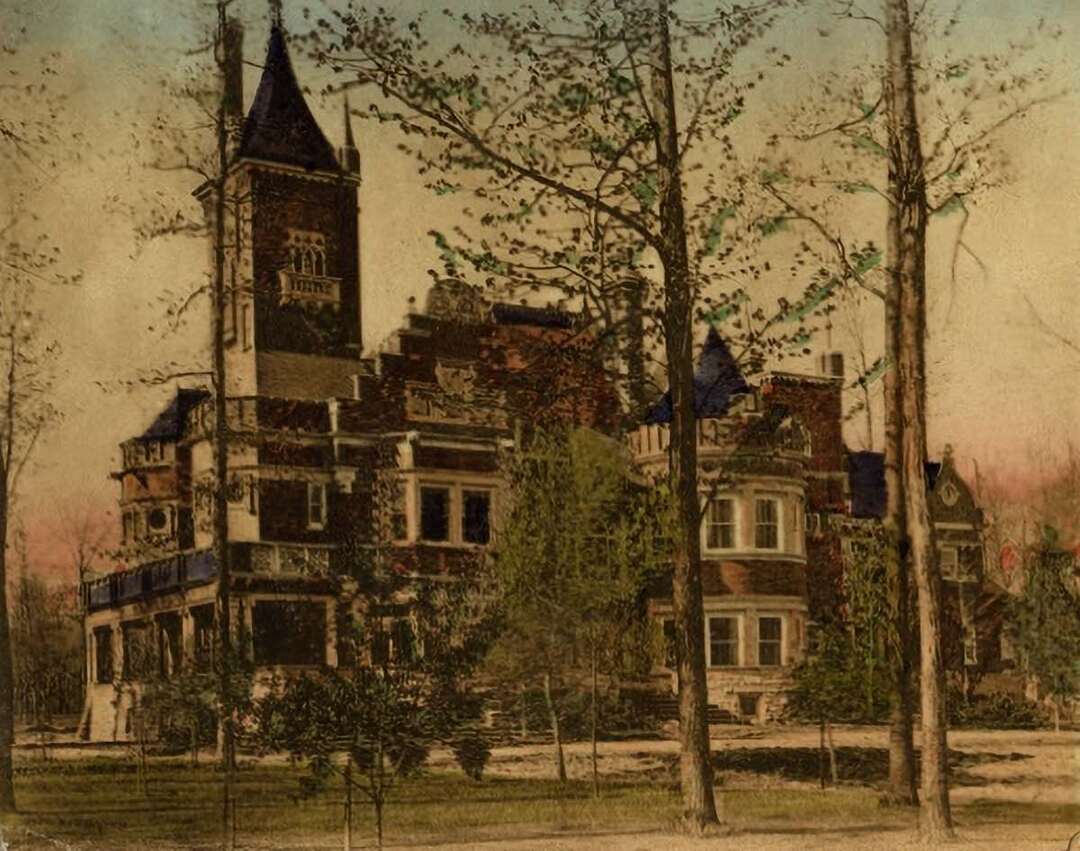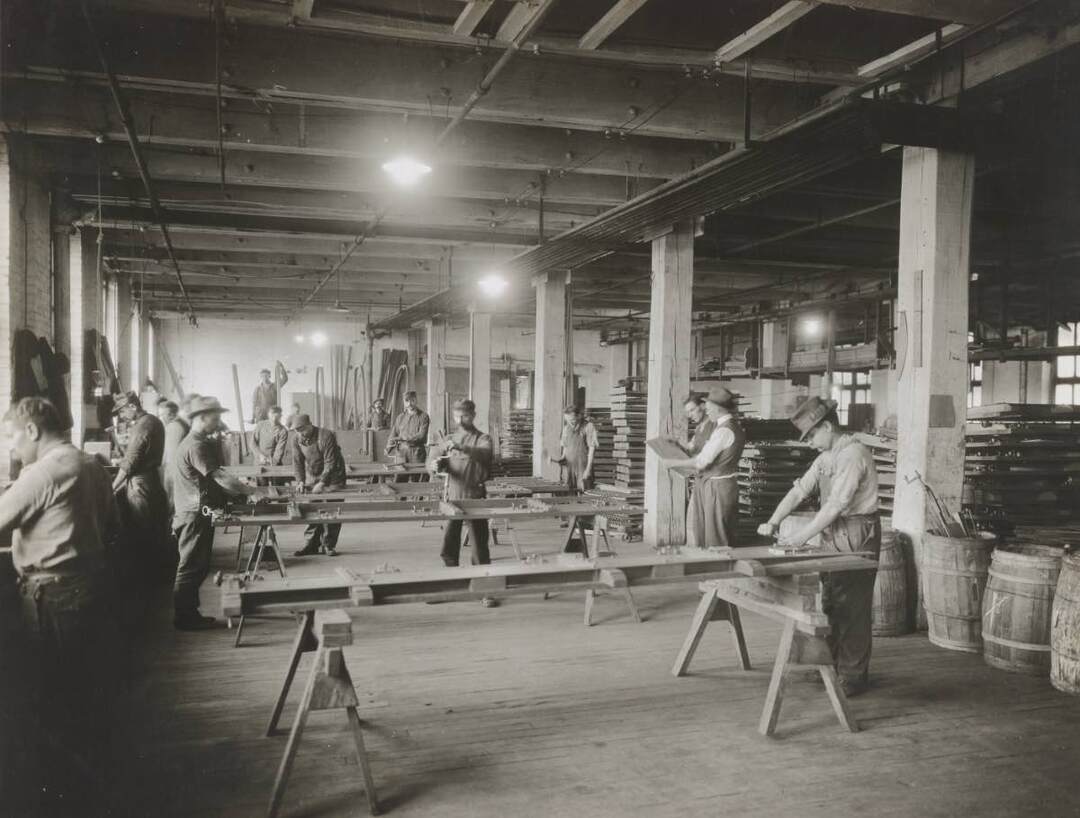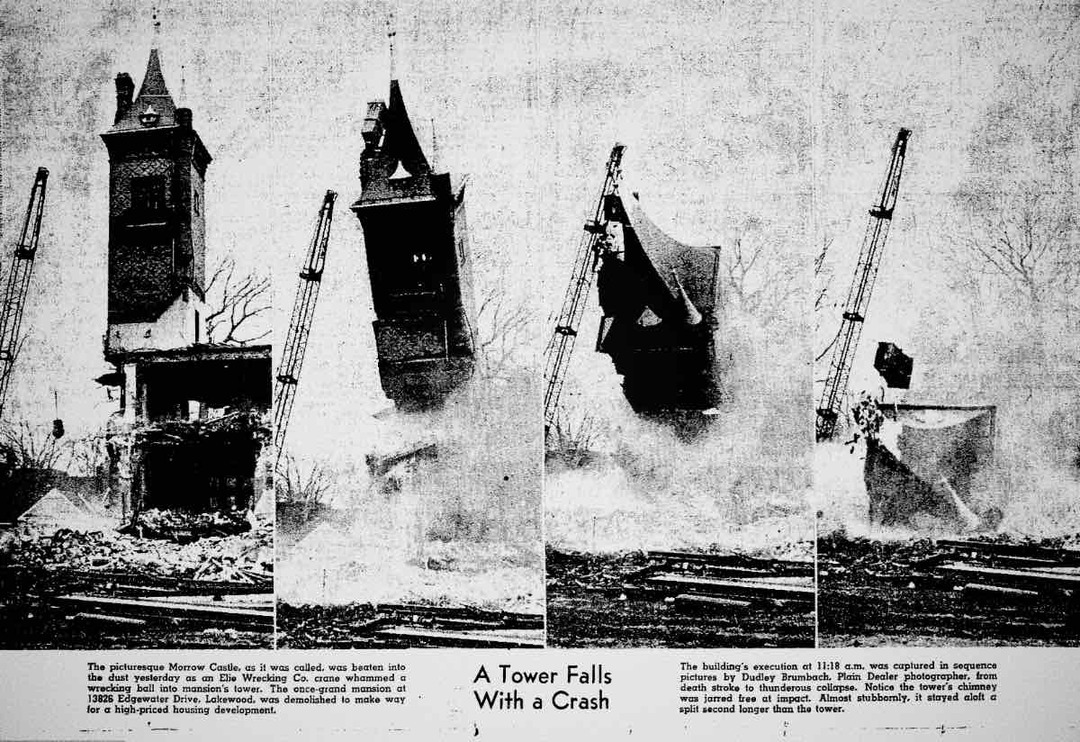
Built by Theodor Kundtz between 1899 and 1903, the mansion known as Kundtz Castle featured a five-story tower, a bowling alley, and a music room with 12 stained glass windows. Kundtz did most of the woodwork himself. In 1925, the Cleveland Press called Kundtz's work "genius."
Theodor Kundtz immigrated to Cleveland from Hungary in 1873, at the age of twenty one. Trained as a carpenter, he found a job making cabinets for Whitworth Co. Kundtz was ambitious and wanted to make a name for himself, so in 1878 he left Whitworth and founded his own company, Theodor Kundtz Co. The main product was sewing machine cabinets, but the company sold many other wood items as well, including bodies for cars and vans. Kundtz accrued dozens of patents to protect his many ventures. Later on, he also founded a bicycle wheel company. Combined, the two businesses turned the poor immigrant into one of Cleveland's largest employers.
As his wealth grew, Kundtz invested his considerable wealth and woodworking skills in the construction of a grand estate situated on five acres of land stretching along the Lake Erie shoreline on the north side of Lake Avenue in Lakewood, Ohio. Each of the many rooms were adorned with Kundtz' own handcarved detail work.
Kundtz was active in Cleveland's Hungarian community. At the height of his success, nearly all of his 2,500 workers (92 percent, reportedly) were Hungarian. Kundtz also founded the Hungarian Savings and Loan Company and funded the Hungarian Hall on Clark Avenue. In 1902, his service to the Hungarian people was recognized and honored when Emperor Franz Joseph of Austria-Hungary had the immigrant-turned-businessman/philanthropist knighted.
Kundtz sold his "castle" to Robert R. Morrow in 1945. In 1960, the Eggleston Development Co. purchased the property for $110,000 with plans for redevelopment. On December 18, 1961, the public saw Kundtz Castle for the last time. After a brief period during which the public was invited to view the interior of the castle, the company tore down the mansion to build 16 custom homes and a new street – Kirtland Lane. Before Kundtz Castle was demolished, the Eggleston Company salvaged some of the woodwork and sold it at auction. Most pieces went to private collectors, allowing the memory of Kundtz Castle to survive, if only in pieces.
Images






